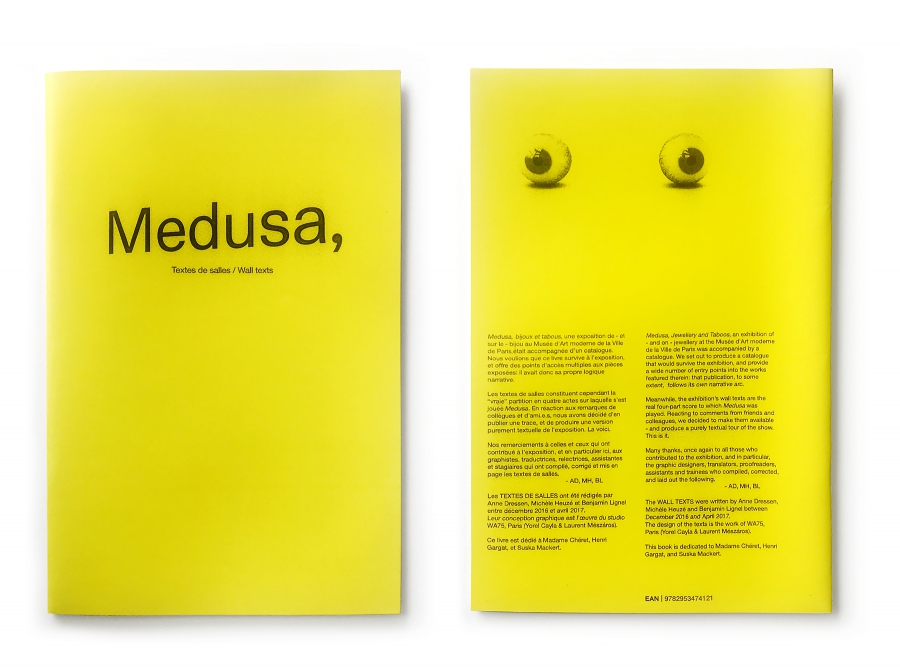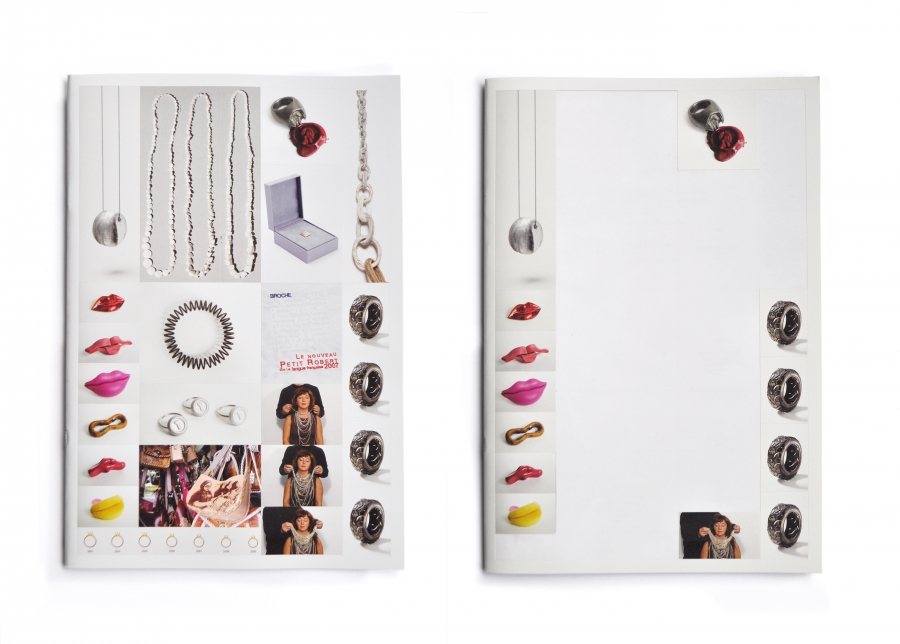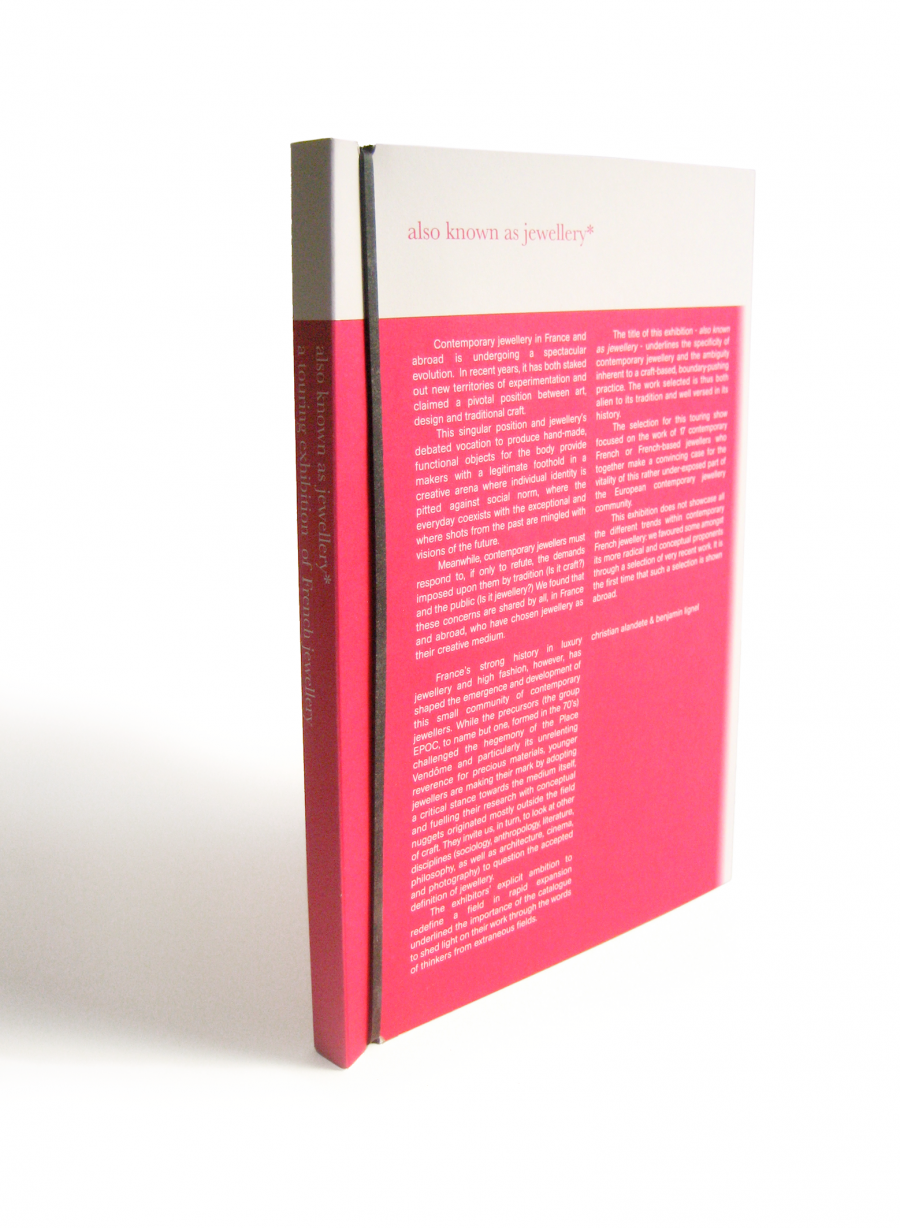Medusa, Bijoux et tabous, une exposition de – et sur le – bijou au Musée d’Art moderne de la Ville de Paris était accompagnée d’un catalogue. Nous voulions que ce livre survive à l’exposition, et offre des points d’accès multiples aux pièces exposées: il avait donc sa propre logique narrative.
Les textes de salles constituent cependant la “vraie” partition en quatre actes sur laquelle s’est jouée Medusa. En réaction aux remarques de collègues et d’ami.e.s, nous avons décidé d’en publier une trace, et de produire une version purement textuelle de l’exposition. La voici.
Nos remerciements à celles et ceux qui ont contribué à l’exposition, et en particulier ici, aux graphistes, traductrices, relectrices, assistantes et stagiaires qui ont compilé, corrigé et mis en page les textes de salles.
– AD, MH, BL
Les TEXTES DE SALLES ont été rédigés par Anne Dressen, Michèle Heuzé et Benjamin Lignel entre décembre 2016 et avril 2017.
Leur conception graphique est l’œuvre du studio WA75, Paris (Yorel Cayla & Laurent Mészáros).
Ce livre est dédié à madame Chéret, Henri Gargat, et Suska Mackert.
+
Medusa, Jewellery and Taboos, an exhibition of – and on – jewellery at the Musée d’Art moderne de la Ville de Paris was accompanied by a catalogue. We set out to produce a catalogue that would survive the exhibition, and provide a wide number of entry points into the works featured therein: that publication, to some extent, follows its own narrative arc.
Meanwhile, the exhibition’s wall texts are the real four-part score to which Medusa was played. Reacting to comments from friends and colleagues, we decided to make them available – and produce a purely textual tour of the show. This is it.
Many thanks, once again to all those who contributed to the exhibition, and in particular, the graphic designers, translators, proofreaders, assistants and trainees who compiled, corrected, and laid out the following.
– AD, MH, BL
The WALL TEXTS were written by Anne Dressen, Michèle Heuzé and Benjamin Lignel between December 2016 and April 2017.
The design of the texts is the work of WA75, Paris (Yorel Cayla & Laurent Mészáros).
This book is dedicated to madame Chéret, Henri Gargat, and Suska Mackert.


